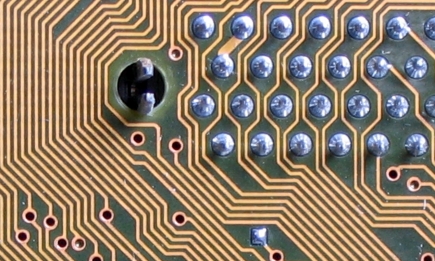EU innovation strategy too complicated

Ernst & Young, one of the big 4 financial advisory firmscreated a critical
Increase in funding, little impact
“In the aftermath of the financial crisis and aware that the EUis facing increasing competition from the world’s rapid-growthmarkets, recent years have seen a massive increase in publicfunding, a proliferation of lines of action, the creation ofcommunities , platforms, infrastructures and even a dedicatedinitiative – Innovation Union.”
“However, this wide array of action – all of which have beencreated with best intentions – have not generated the expectedlevel of success. Europe will again miss its goal of achieving alevel of R&D of 3% of GDP by 2020. And the EuropeanCommission’s projections to 2050 show that the EU Member States'(EU27) share of global patents is set to fall from 40% toapproximately 20%. This is all despite the fact that the EU27 formsthe world’s largest single market. Why is this the case?”
Five challenges for an Innovation Union
Ernst & Young identifies five areas where the EU faceschallenges.
1. Innovation Policy is too complicated
Overlapping programs and inefficient decision-making processeshave created a situation where much of the EU funding has littleimpact on outcomes.
2. R&D gap
While public R&D spending increased significantly, privatespending is still too low compared to other leading nations (USA,South Korea, Japan).
3. Sectoral competitiveness and IT issues
EU firms specialize too much on low-tech goods and services.Japan (electric components, audiovisual electronics,telecommunications) and the US (medical equipment) focus more on atechnology intensive economy.
4. Inadequate infrastructure
Both broadband reach and computing infrastructures in the EU arelimited.
5. Limited financing options
A lack of financial market harmonization hampers cross-borderjoint ventures and the creation of funds where they are needed mosturgently.
Three layers to success
Having analyzed these five weaknesses, the E&Y reportcontinues with three recommendations. Firstly, “governments shouldact as leaders and innovators by creating the main building blocksof an innovative environment – world-class infrastructure, ahigh-performing education system and research andinnovation-friendly legal rules.” Secondly, “governments shouldcreate funding and facilitating initiatives to strengthen linksbetween researchers, entrepreneurs and private investors, possiblywith the help of public funds and tax credits.”
Finally, E&Y states that “government has the key task of’nudging’ existing innovation efforts toward long-term policygoals. This should mostly occur through the strategic use of publicprocurement and launching a limited number of partnerships thataddress key long-term market failures.”
To read the full report, click
Meest Gelezen
Wederom intimidatie van journalisten door universiteit, nu in Delft
‘Burgerschapsonderwijs moet ook verplicht worden in hbo en wo’
Extra geld voor bètafaculteiten is daar nooit terechtgekomen
Raad van State: laat taaltoets nog niet gelden voor hbo-opleidingen
Vrouwen houden universiteit draaiende, maar krijgen daarvoor geen waardering

